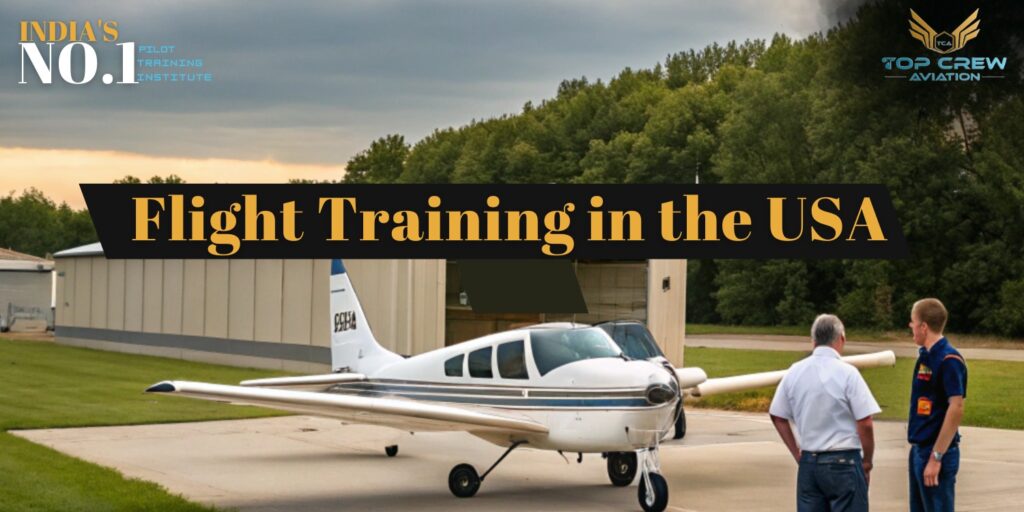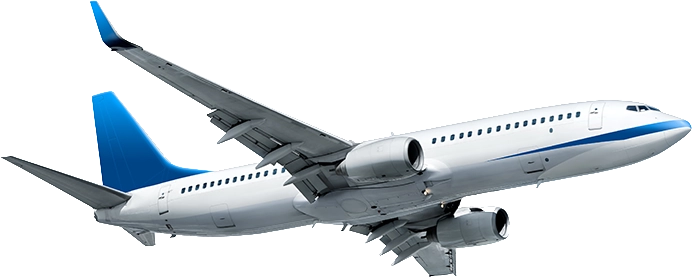Flight Training in the USA: The Ultimate Guide for Aspiring Pilots
Have you ever dreamed of soaring through the skies, commanding a powerful aircraft, and exploring the world from above? If you are an aspiring pilot, the USA offers some of the best flight training opportunities in the world. But with so many options and requirements, the journey to becoming a pilot can seem daunting.
Where do you start? What licenses do you need? How much will it cost? These questions might be swirling in your mind like turbulent air currents. Don’t worry – we have got you covered! This comprehensive guide will navigate the exciting world of flight training in the USA, from understanding basic requirements to choosing the right flight school and exploring career opportunities.
Whether you are a domestic student or an international aspirant, we will walk you through every step of the process. We will discuss the various types of pilot licenses, break down the costs, and even explore scholarship opportunities to help make your dreams take flight. So fasten your seatbelts and prepare for takeoff as we plunge into the ultimate guide for aspiring pilots looking to start their journey of flight training in the USA!
Understanding Flight Training Requirements in the USA
FAA Regulations and Certifications
The Federal Aviation Administration (FAA) oversees flight training in the USA and sets strict standards for pilot certification. Aspiring pilots must complete a series of licenses, starting with the Private Pilot License (PPL) and progressing to higher ratings like Instrument Rating (IR) and Commercial Pilot License (CPL).
Medical Requirements for Pilots
To ensure safety, pilots must meet specific medical standards:
- Class 1 Medical Certificate: For Commercial Pilots
- Class 2 Medical Certificate: For Private Pilots and Student Pilots
- Class 3 Medical Certificate: ATC and Cabin Crew
| Medical Class | Validity (Under 40) | Validity (40 and over) |
|---|---|---|
| Class 1 | 12 months | 6 months |
| Class 2 | 24 months | 12 months |
| Class 3 | 60 months | 24 months |
Age Restrictions and Eligibility Criteria
- Minimum age for solo flight: 16 years
- Minimum age for PPL: 17 years
- Minimum age for CPL: 18 years
- Mandatory retirement age for airline pilots: 65 years
English Language Proficiency
As the international language of aviation, English proficiency is crucial. Pilots must demonstrate:
- Speaking skills
- Listening comprehension
- Reading comprehension
- Writing ability
Overall Cost, Training Process, and Career Prospects
Flight training in the USA can be expensive, with costs varying based on the chosen program and location. The training process involves ground school, flight time, and examinations.
Career prospects are promising, with opportunities in commercial airlines, private charters, and specialized aviation roles.
Now that we have covered the basic requirements, Next, we will explore the step-by-step guide to flight training in the USA, helping you navigate the path to becoming a certified pilot.
Step-by-step Guide to Flight Training in the USA
Now that we have covered the reasons for choosing the USA for flight training, let’s dive into the step-by-step process of becoming a pilot in the United States.
Step 1: Choose the Right Flight School
Selecting the appropriate flight school is crucial for your success. Consider factors such as:
- Location and Climate
- Fleet quality and size
- Instructor experience
- Student-to-instructor ratio
- Training programs offered
- Cost and financial aid options
| Factor | Importance |
| Location | High |
| Fleet | High |
| Instructors | Very High |
| Programs | High |
| Cost | Medium |
Step 2: Secure a Student Visa
International students must obtain an M-1 or F-1 visa:
- Choose a SEVP-approved flight school
- Receive the I-20 form from the school
- Pay the SEVIS fee and fill out the DS 160 form
- Schedule a visa interview at the U.S. embassy
Step 3: Begin with a Private Pilot License (PPL)
The PPL is your entry point into aviation:
- Minimum 40 flight hours
- Ground school training
- Written exam
- Practical test
Step-4: Advance to Commercial Pilot License (CPL)
After PPL, progress to CPL:
- Minimum 250 flight hours
- Instrument rating
- Advanced ground training
- Commercial pilot written exam
- Commercial pilot
Step-5: DGCA CPL Conversion
For Indian pilots, convert your FAA CPL to DGCA:
- Pass DGCA written exams (Air Navigation, Air Regulations, Aviation Meteorology and, RTR(A)
- Complete DGCA required flying hours
- Clear DGCA flight test
Next, we will explore how to choose the right flight school in more detail, ensuring you make the best decision for your aviation career.
Choosing the Right Flight School
Now that you understand the flight training requirements and steps, it’s crucial to select the right flight school for your journey. This decision can significantly impact your training experience and future career prospects.
A. Part 61 vs Part 141 schools
When choosing a flight school, you will encounter two main types: Part 61 and Part 141 schools. Here’s a comparison to help you understand the differences
| Aspect | Part 61 Schools | Part 141 Schools |
| Curriculum | Flexible, customizable | Structured, FAA-approved |
| Training hours | More hours required | Fewer hours required |
| Scheduling | More flexible | More rigid |
| Cost | Often less expensive | It can be more expensive |
| Best for | Self-paced learners | Full-time students |
B. Evaluating school facilities and fleet
- Check the condition and variety of aircraft available
- Assess the quality of simulators and training devices
- Examine maintenance records and safety protocols
C. Instructor qualifications and experience
- Look for schools with experienced, certified flight instructors (CFIs)
- Consider the instructor-to-student ratio
- Inquire about continuing education programs for instructors
D. Location and weather considerations
- Choose a location with diverse weather conditions for well-rounded training
- Consider proximity to different types of airspace for varied experience
- Evaluate the climate’s impact on year-round training opportunities
E. Cost and financial aid options
- Compare tuition and additional fees among different schools
- Inquire about financing options, payment plans, and scholarships
- Consider the long-term value of the training program
When evaluating flight schools, it’s essential to visit in person, speak with current students, and thoroughly research each option. Your choice will set the foundation for your aviation career, so take the time to make an informed decision.
Flight Training Curriculum
Now that we have covered choosing the right flight school let’s dive into the flight training curriculum. Understanding the components of your training program is crucial for success in your aviation journey.
- Ground School and Theoretical Knowledge
Ground school forms the foundation of your pilot education. It covers essential topics such as:
- Aerodynamics
- Aircraft systems
- Navigation
- Meteorology
- Federal Aviation Regulations
Most flight schools offer both in-person and online ground school options. A typical ground school curriculum includes:
| Topic | Description |
| Aerodynamics | Principles of flight, lift, drag, and aircraft performance |
| Navigation | Chart reading, flight planning, and GPS systems |
| Meteorology | Weather patterns, forecasting, and decision-making |
| Regulations | FAA rules, airspace classifications, and pilot responsibilities |
- Flight Simulator Training
Simulator training is a cost-effective way to practice procedures and emergency scenarios. Benefits include:
- Risk-free environment for learning
- Repetition of complex maneuvers
- Practice in various weather conditions
- Familiarization with cockpit instruments
- Actual Flight Hours and Requirements
The FAA mandates specific flight hour requirements for each pilot certificate:
- Private Pilot: Minimum 40 hours (usually 60-75 hours in practice)
- Commercial Pilot: Minimum 252 hours
- Airline Transport Pilot: Minimum 1,500 hours
- Solo Flights and Cross-Country Experience
Solo flights are a crucial milestone in your training. you will typically complete:
- Local solo flights around the airport
- Short cross-country flights (50+ nautical miles)
- Long cross-country flights (150+ nautical miles)
These experiences build confidence and decision-making skills essential for your future as a pilot. Let’s explore why many aspiring pilots choose the USA for their flight training.
Why Choose the USA for Flight Training
When it comes to flight training, the United States stands out as a premier destination for aspiring pilots worldwide. There are several compelling reasons why the USA is an excellent choice for your aviation education.
- Internationally Recognised FAA Certifications
The Federal Aviation Administration (FAA) certifications obtained in the USA are globally recognized and respected. This international acceptance opens doors to numerous career opportunities worldwide, making your investment in flight training more valuable.
- Faster Completion of Training
The USA boasts diverse weather conditions and a vast airspace, providing ample opportunities for flight hours. This abundance of flying time is crucial for gaining the necessary experience and meeting license requirements.
- Availability of Flight Hours
One of the significant advantages of flight training in the USA is the efficiency of the programs. Many schools offer accelerated courses that allow students to complete their training in a shorter time frame compared to other countries.



